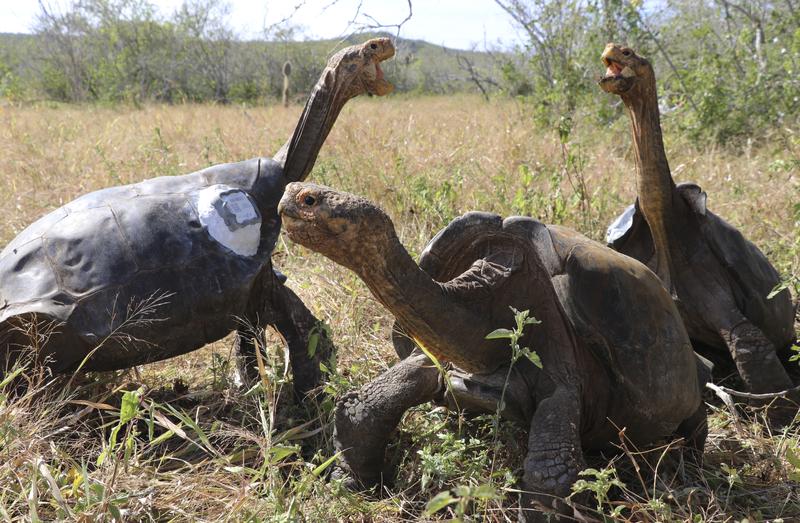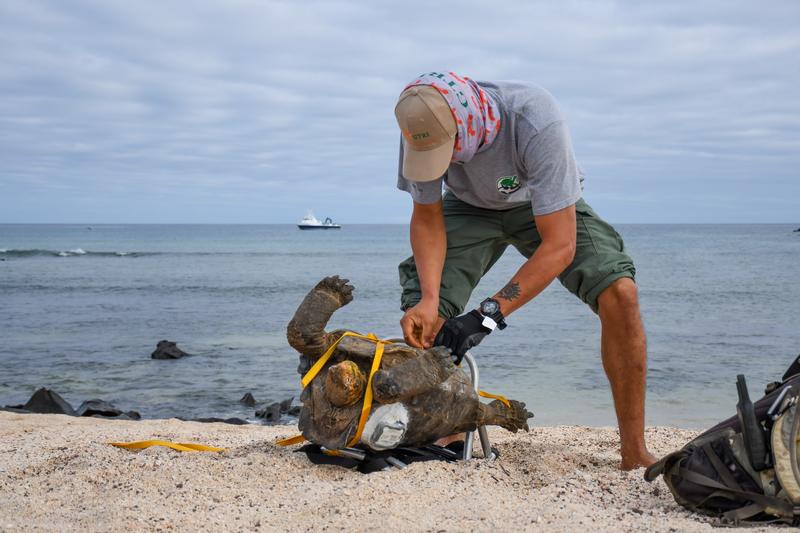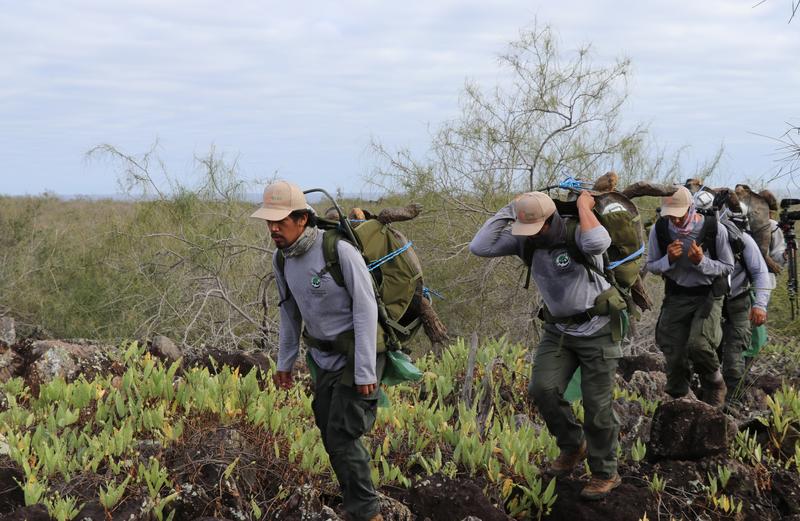 In this photo released by Galapagos National Park, giant tortoises stand moments after release to their original habitat on Isla Espanola, Galapagos National Park, Ecuador, Monday, June 15, 2020. Their release marks the end of a captive breeding program aimed at saving the species from extinction, in which adult tortoises were taken to a park breeding center, and then returned here to their original habitat. (GALAPAGOS NATIONAL PARK VIA AP)
In this photo released by Galapagos National Park, giant tortoises stand moments after release to their original habitat on Isla Espanola, Galapagos National Park, Ecuador, Monday, June 15, 2020. Their release marks the end of a captive breeding program aimed at saving the species from extinction, in which adult tortoises were taken to a park breeding center, and then returned here to their original habitat. (GALAPAGOS NATIONAL PARK VIA AP)
A group of giant tortoises who have lived in captivity for decades and helped rescue their species from the brink of extinction were released into the wild in the Galapagos Islands on Monday.
The tortoises were bred in captivity to repopulate the islands after their numbers in the wild went down to just 15 individuals, said park director Danny Rueda
The tortoises were bred in captivity to repopulate the islands after their numbers in the wild went down to just 15 individuals, said park director Danny Rueda. There are now more than 2,000 of them on Espanola Island, he said.
The giant tortoises are known for their long, leathery necks and lifespans of over 100 years. Virtually synonymous with the Galapagos Islands off the coast of Ecuador, they were one of the species that helped Charles Darwin form his theory of evolution in the 19th century.
One of the newly freed tortoises is Diego, estimated to be around 100 years old. Renowned for his fertility, he alone has fathered some 800 offspring.
ALSO READ: Seychelles swaps debt for groundbreaking marine protectionection
Diego’s return to his native Espanola comes after around eight decades of living in a California zoo and then in the tortoise recovery program on Santa Cruz island in the Galapagos.
 In this photo released by Galapagos National Park, park worker Johannes Ramirez releases a giant tortoise he carried on his back to its original habitat on Isla Espanola, Galapagos National Park, Ecuador, Monday, June 15, 2020. (GALAPAGOS NATIONAL PARK VIA AP)
In this photo released by Galapagos National Park, park worker Johannes Ramirez releases a giant tortoise he carried on his back to its original habitat on Isla Espanola, Galapagos National Park, Ecuador, Monday, June 15, 2020. (GALAPAGOS NATIONAL PARK VIA AP)
For his final journey home, Diego was taken by boat to Espanola, along with 14 of his companions. From there, rangers used backpacks to take the tortoises - who can weigh up to 180 kg- to an area where cactus grows in abundance that will help them readapt. There, they will be monitored with GPS trackers.
 In this photo released by Galapagos National Park, volunteers carry giant tortoises on their backs, to be released to their original habitat on Isla Espanola, Galapagos National Park, Ecuador, Monday, June 15, 2020. (GALAPAGOS NATIONAL PARK VIA AP)
In this photo released by Galapagos National Park, volunteers carry giant tortoises on their backs, to be released to their original habitat on Isla Espanola, Galapagos National Park, Ecuador, Monday, June 15, 2020. (GALAPAGOS NATIONAL PARK VIA AP)
READ MORE: Researchers find hammerhead 'nursery' off Galapagos Island
It has been a conservation success story.
“We can shut down the captive breeding program of this species because their natural behavior is effective,” said Rueda.


